Southern Utah’s red rock country stretches farther than the well-known entrances to national parks. Moab is a compact adventure hub whose scenic drives, arches, rock towers, and roadside curiosities reward the curious traveler who stays outside the busiest park gates. This guide highlights ten outstanding places around Moab that sit outside Arches, Canyonlands, and Dead Horse State Park and includes practical tips for visitors staying in vacation rentals who want to make the most of short stays, family trips, or gear-heavy adventures.
Why explore beyond the parks
The national parks near Moab draw large crowds and rightfully so, but much of the region’s character lives in the surrounding backcountry and roadside attractions. These off-park destinations are often less crowded, easier to access for families, and offer dramatic photo opportunities at sunrise and sunset without the long lines. Many can be visited in a rental car, though a few require higher-clearance or four-wheel-drive vehicles. For travelers staying in region vacation rentals, these locations make great half-day excursions that fit around longer hikes or guided activities.
Quick planning essentials for vacation rental guests
- Vehicle choice: A compact car handles most paved pullouts and easy dirt roads. For remote viewpoints and some canyon rims, a high-clearance or four-wheel-drive vehicle is necessary.
- Timing: Sunrise and sunset yield the best light for photos and cooler temperatures for walking. Weekdays reduce crowds at popular roadside stops.
- Packing: Water, sun protection, sturdy shoes, a small first-aid kit, and a printed map or offline GPS because cell coverage can be patchy.
- Stay logistics: Choosing a vacation rental with a full kitchen and outdoor patio offers flexible meal times around sunrise outings. Explore https://staycopperrock.com for rental options and local property highlights.
1. Shaffer Canyon Drive and the Potash Ponds
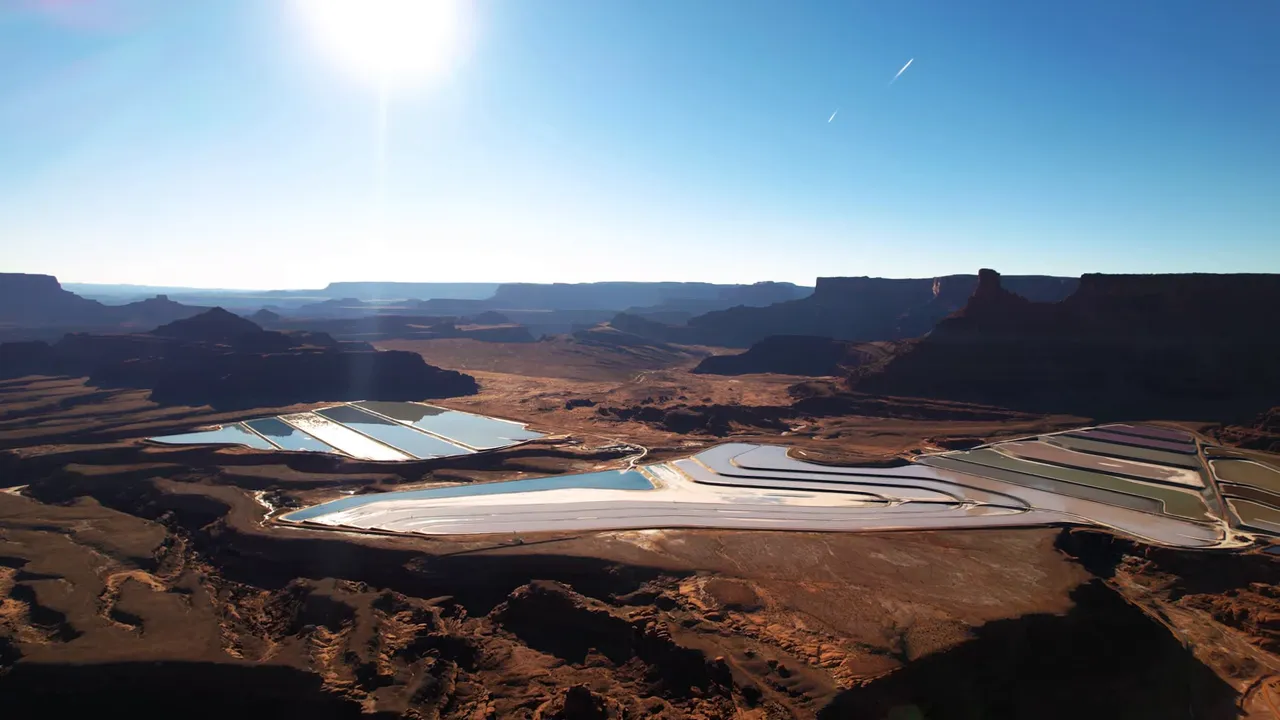
Shaffer Canyon Drive links Moab with the Canyonlands southern approach and skirts one of the region’s most surreal sights: the potash evaporation ponds. These industrial ponds create banded, pastel-colored reflections that look almost otherworldly at midday. The road itself is a scenic, twisting canyon drive that feels like an off-road outing even on a paved surface.
Visitors should note the road’s narrow sections and steep grades; large RVs and trailers are not recommended. Those staying in compact rental properties can make a sunrise stop for vivid reflections on still water or time an afternoon drive when the light warms the canyon walls. The potash ponds are located just east of Dead Horse State Park and can be viewed from pullouts along Shaffer Canyon Road.
2. Castle Valley and Castle Tower

Castle Valley offers a panoramic sweep of monolithic sandstone towers rising from a broad desert floor. Castle Tower is a dramatic, narrow spire that has become a favorite subject for photographers and climbers. The valley is also ideal for a relaxed afternoon drive, short hikes, and picnic stops near expansive views.
Climbing routes on the tower are for experienced climbers. Families staying in nearby rentals can plan a sunset outing to capture silhouette photos or a morning drive to catch golden light on the towers. The valley’s open landscape makes it a good place to slow down and take in the scale of Moab’s geology.
3. Corona Arch and Bow Tie Arch

Corona Arch is one of the most impressive free-standing arches outside national park boundaries. The round-trip hike is about 2.5 miles with roughly 482 feet of elevation gain, and the trail runs through varied desert terrain and a small creek crossing. Bow Tie Arch appears shortly before Corona Arch, so visitors enjoy two arches on one short route.
This hike rates as moderate and includes a short ladder section that most families find manageable. Travel parties planning to stay overnight in Moab’s vacation rentals will find Corona Arch perfect for late-afternoon hikes followed by an easy dinner back at the rental. Carry water, snacks, and sturdy footwear. Trailheads can fill on weekends; early starts help avoid crowds.
4. Jug Handle Arch (Roadside Access)
Jug Handle Arch sits literally beside the road and earns high marks for accessibility. The arch’s distinctive handle-shaped curve makes for a quick, rewarding stop. Visitors can park on the shoulder and walk a short distance to photograph the arch with the river and canyon walls forming a dramatic backdrop.
This stop is ideal for families with small children or anyone looking to add an easy photo opportunity without an additional hike. Plan a brief pause here when traveling between Moab and other scenic drives to maximize time in the rental for meals and rest.
5. Fisher Towers and Dewey Bridge

Fisher Towers are a set of striking rock formations northeast of Moab. The 2.5-mile round-trip trail to the towers is well-marked and suitable for families. The road to the trailhead is scenic, and the site includes primitive camping near the trailhead for those wanting to spend a night under the stars.
A short drive further takes visitors to the historic Dewey Bridge. Built in 1916, the steel truss bridge once connected the Moab area across the Colorado River. Today it is a quiet spot for picnicking and contemplative sunset views. Vacation rental guests who plan a Fisher Towers morning can extend the outing to include a riverside picnic near the bridge.
6. Marlboro Point — a remote viewpoint
Marlboro Point is a panoramic viewpoint offering unobstructed vistas of the La Sal Mountain range to the southeast and the Moab Rim to the west. Access generally requires a high-clearance four-wheel-drive vehicle, so Marlboro Point tends to be visited by those with off-road-capable rentals or dedicated off-road vehicles.
Parking is limited, and the approach road may be closed or rough after storms. For visitors staying in town without appropriate vehicles, consider organizing an off-road tour or joining a local guide. Photographers with access will find Marlboro Point a dramatic sunrise location when the light crosses both mountain and mesa landscapes.
7. Crystal Geyser (near Green River)
Crystal Geyser is a natural carbon dioxide-driven geyser on the Green River near I-70. Unlike thermal hot spring geysers, this feature erupts as CO2 pushes water up through the ground. Eruptions can reach up to 60 feet and occur at semi-regular intervals, making it a unique roadside curiosity for those willing to take an hour-long drive from Moab.
The turnoff lies just west on I-70, and a dirt road leads to the viewing area. This accessible roadside stop is suitable for compact rentals; the road to the geyser is generally passable in non-specialized vehicles. Guests driving from Salt Lake City or Denver en route to Moab often find Crystal Geyser an interesting detour.
8. Wilson Arch
Wilson Arch is one of the larger freestanding arches in the region and sits about 28 minutes south of Moab. The arch spans roughly 91 feet and climbs 48 feet high. Visitors can view Wilson Arch from the parking area or take a brisk less-than-one-mile hike to reach the base and stand directly beneath it.
Its location along the route to Canyonlands Needles District makes Wilson Arch an excellent final stop before entering the more remote sections of Canyonlands or returning to a rental for a relaxed evening. For families, the short trail is a manageable hike that rewards with impressive scale and great photo opportunities.
9. Hole in the Rock and the Historic Trading Post
Hole in the Rock is a unique carved sandstone feature and roadside attraction south of Moab. Initially developed by Albert Christensen in the 1940s and opened to the public in the 1950s, the site includes eclectic collections, a small private zoo, metal art displays, and a trading post selling local pottery and Native American crafts.
Admission to go inside is modestly priced. Visitors staying in vacation rentals often pair this stop with nearby sites like Wilson Arch for a half-day of cultural and historical exploration outside of strenuous hiking plans. The trading post makes a convenient place to pick up locally made souvenirs before returning to the rental for dinner.
10. La Sal Mountain Scenic Drive
The La Sal Scenic Drive winds around the La Sal Mountains, a snow-capped range that rises abruptly from the red desert. The full loop is about 103 miles and offers ever-changing perspectives as the route climbs and skirts alpine forests and high-country meadows. Mount Peale stands as the range’s highest point, topping 12,700 feet.
This drive is a surprise for many visitors who expect only desert landscapes. The contrast between alpine and desert environments becomes an appealing escape, especially on hot summer days. Rental guests who need a break from sun and sand will appreciate the cool, higher-elevation hikes and picnic spots along the drive. Plan for a full day if completing the entire loop and carry layers as temperatures can vary dramatically with elevation.
Bonus: Moab Sand Hill
Just north of town near the entrance to Arches, the Moab Sand Hill provides a fun, family-friendly stop. The steep sand dune invites kids to run, slide, or try sandboarding. Vacation rental families should bring a tarp or simple sled for easy sliding and a change of clothes for children who like to play in sand. This quick stop is perfect for burning off energy between more serious hikes.
Sample 3-day itinerary for vacation rental guests
- Day 1 — Arrival and light exploration: Check into a rental with a full kitchen, pick up groceries, then drive Shaffer Canyon for sunset photos. Evening: cook dinner and enjoy the patio views.
- Day 2 — Classic arches and towers: Morning hike to Corona Arch and Bow Tie Arch. After lunch, drive to Jug Handle Arch and Fisher Towers. Evening: return to rental for a relaxed dinner and stargazing.
- Day 3 — Scenic loops: Early drive to the potash ponds for sunrise, then a day trip around the La Sal Scenic Drive. If time allows en route home, stop at Wilson Arch or Hole in the Rock.
For travelers interested in park-specific planning, an excellent local resource is the Arches guide page: https://staycopperrock.com/activities/arches-national-park/. For broader vacation rental ideas and properties near popular Southern Utah attractions, explore https://staycopperrock.com and the property and neighborhood pages linked there.
Practical tips and local considerations
- Weather and seasonality: Spring and fall offer the best balance of mild temperatures and reliable access to dirt roads. Summers become very hot, making early mornings essential for hikes. Winters bring occasional snow at higher elevations, particularly along the La Sal Scenic Drive.
- Cell coverage: Service is inconsistent at many viewpoints. Download maps and trail descriptions before heading into remote areas.
- Permits and regulations: Most roadside attractions require no permits. Climbing areas may have seasonal closures or access advisories; check local climbing organizations or land management agencies before attempting technical routes.
- Leave no trace: Pack out trash, avoid stepping on cryptobiotic soil crusts, and stay on established trails and parking areas to preserve the landscape for future visitors.
Internal resources for planning a rental-based trip
Those arranging longer stays or group travel will find helpful planning content at these pages:
- Vacation rental and property management overview: https://staycopperrock.com/
- Guides to other Southern Utah adventures and nearby communities: https://staycopperrock.com/exploring-southern-utah-top-5-must-do-activities/
- Tips for family-friendly activities and local attractions: https://staycopperrock.com/5-things-to-do-during-your-st-george-vacation/
What vehicle is needed for the places listed around Moab?
Most roadside stops and popular hikes like Corona Arch, Jug Handle Arch, and Wilson Arch are accessible in a compact car. Shaffer Canyon Drive, Marlboro Point, and some portions of the La Sal Scenic Drive are best reached with high-clearance or four-wheel-drive vehicles. When in doubt, plan an alternate activity or arrange a guided off-road tour.
When is the best time to photograph the potash ponds and red rock formations?
Sunrise and sunset produce the most striking light for reds and reflections. The potash ponds often display the strongest colors in calm conditions, so early morning when winds are low is ideal. For rock towers and arches, late afternoon and golden hour provide warm tones and deep shadows.
Are any of the stops suitable for families with small children?
Yes. Jug Handle Arch, Moab Sand Hill, Wilson Arch, and the viewing areas for the potash ponds are family-friendly and require minimal walking. Corona Arch is family-accessible but includes some steep and rocky sections; supervise children closely on ladder sections and near edges.
Is camping available near Fisher Towers?
Yes. Primitive camping is available near the Fisher Towers Trailhead. Campers should practice leave-no-trace principles and bring adequate water and shade. Some nearby commercial campgrounds and vacation rentals provide additional amenities for families and groups.
How should visitors plan food and supplies when staying in a vacation rental?
Choosing a rental with a full kitchen and an outdoor patio enhances flexibility—hikers can prepare early breakfasts and pack lunches easily. Stock up at Moab grocery stores before heading to remote drives; many scenic stops lack food services. Many rentals offer local concierge tips or recommendations to help plan day trips.
Final thoughts
Moab’s surroundings are as compelling as its park interiors. These ten places form a varied palette of scenery from industrial-geometry potash ponds to alpine La Sal peaks. Staying in a well-equipped vacation rental allows visitors to pace outings, cook meals around sunrise and sunset excursions, and store gear for multi-day adventures. With thoughtful planning—vehicle choice, timing, and packing—travelers can experience the quieter, dramatic corners of Moab that make the region so memorable.

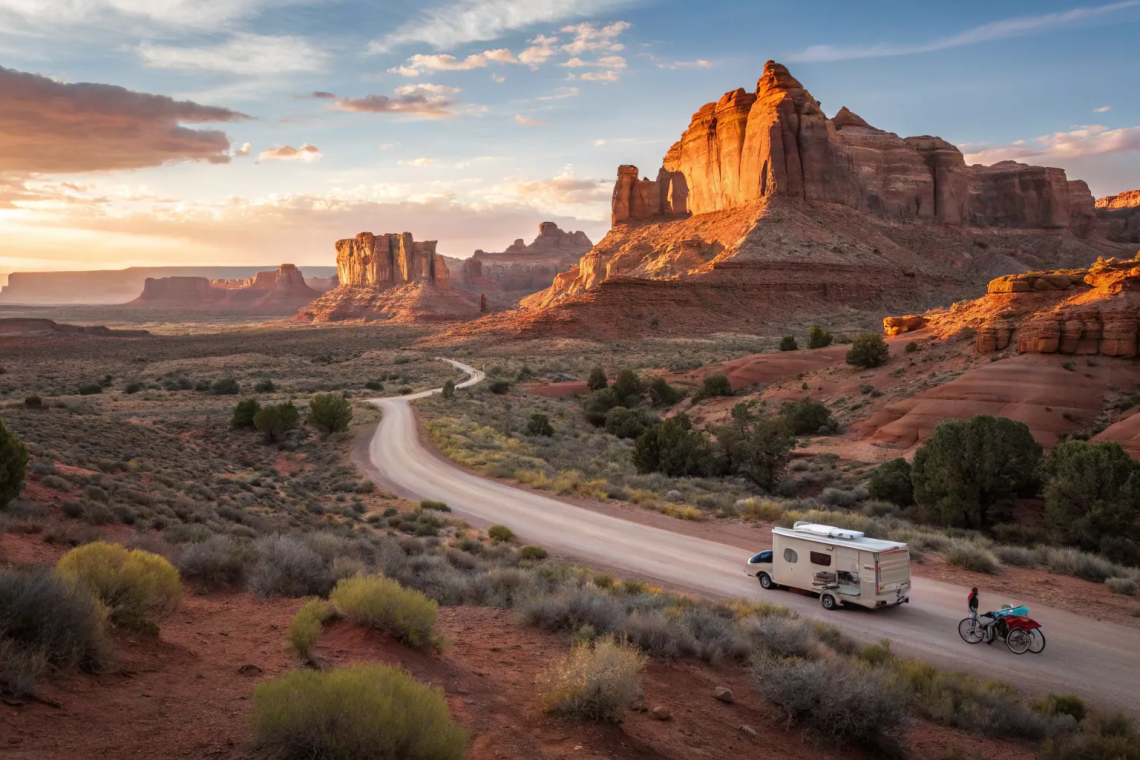




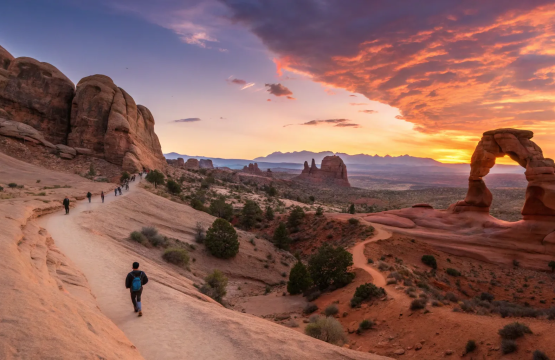
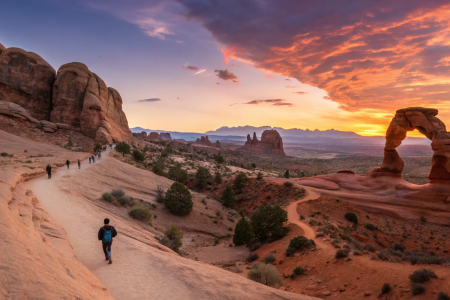
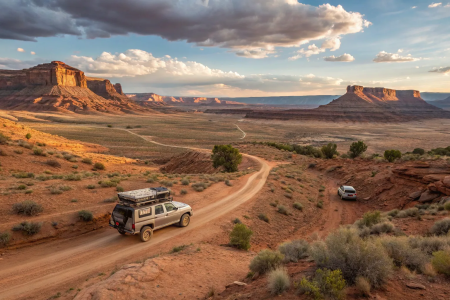


Join The Discussion